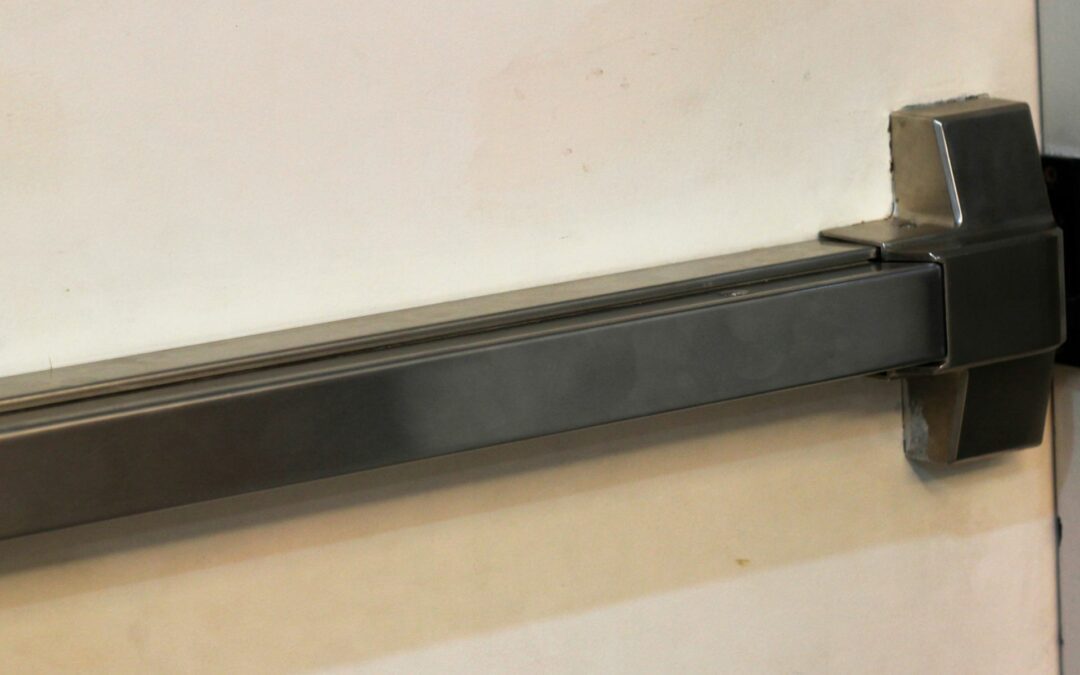After the tragedy of the Iroquois Theatre Fire that killed 602 people, hardware salesman Carl Prinzler invented the crash or panic bar. This innovation only lets doors open outward and prevents people from trampling each other, increasing safety when exiting a commercial building in an emergency situation. Today, panic bars are a mainstay of commercial safety hardware. If you work in a commercial building, you’ll need to know the ins and outs of panic bar installation and repair.
A Guide To Panic Bar Installation
When it comes to panic bar installation, you first want to stay informed about codes and regulations for installing a panic bar on your commercial property. Once you know the requirements, you’ll be able to proceed with the installation process.
Take The Necessary Measurements
Using a tape measure, record the length and width of the door. After recording these measurements, you’ll know what kind of panic bar to order. The last thing you want to deal with is a panic bar that ends up being too small or too large to properly fit your door.
Remove The Old Hardware
Before you can start the panic bar installation process, you’ll need to remove any old or damaged hardware from the current door. You’ll need to ensure you have the right equipment for removing the old and installing the new hardware. These parts include a drill, tape measure, level, and screwdriver.
Follow The Instruction Manual
Most instruction manuals have a specific template for how to install the panic bar. Using this template, you’ll drill holes in the door that will allow you to install the panic bar appropriately. To install the brackets and the bar, use a level to ensure evenness. As you install the necessary components, use a screwdriver to keep all the parts secure. Then you’ll want to test out the panic bar to see that it works and remains in place.
Potential Panic Bar Repairs
Like all doors and locks, even panic bars will require repairs from time to time. The most common issues involved in panic bar installation and repair include the following:


1. Panic Bar Won’t Open The Door
There’s nothing more annoying or dangerous than a panic bar that can’t open a door. If this situation is occurring, you’ll need to check the alignment of your door. Improper alignment can keep the door from working properly. This can be the result of poor installation or loose hardware. To avoid further complications, reach out to a professional locksmith to return your panic hardware to working condition.
2. Latch Issues
Another potential problem that can arise with a panic bar is latch issues. More specifically, you could have a latch that’s either poorly aligned or in need of lubrication. Try lubricating the latch first and see if that makes a difference. If not, have a professional adjust the alignment.
3. Dogging Mechanism Problems
Finally, the dogging mechanism, the panic bar component that keeps the latch retracted, might need to be lubricated or have its alignment corrected. Just like with the latch, you’ll need a professional to take a look if lubrication doesn’t resolve the problem. You’ll be able to tell if the dogging mechanism is the source of your panic bar problems if it’s making excessive noise or failing to retract.
Call United Locksmith For Your Panic Bar Installation And Repair Needs!
We hope this guide to panic bar installation and repair will help you get started with making your workplace safer than before. Of course, we understand if you feel hesitant about performing the initial installation yourself. After all, having a professional take care of it will reduce the chances of needing to seek repairs in the future. For this reason, you should contact us today at United Locksmith for the best panic bar installation job possible.

